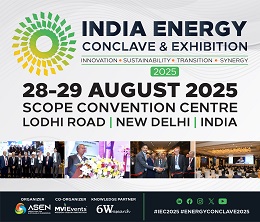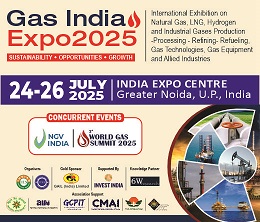Malaysia Ethylene Glycol Market (2025-2031) | Outlook, Forecast, Revenue, Growth, Value, Industry, Share, Size, Trends, Companies & Analysis
Market Forecast By Product (MEG, DEG, TEG), By Application (PET, Polyester Fiber, Antifreeze, Films) And Competitive Landscape
| Product Code: ETC324146 | Publication Date: Aug 2022 | Updated Date: Aug 2025 | Product Type: Market Research Report | |
| Publisher: 6Wresearch | No. of Pages: 75 | No. of Figures: 35 | No. of Tables: 20 | |
Malaysia Ethylene Glycol Market Highlights
| Report Name | Malaysia Ethylene Glycol Market |
| Forecast Period | 2025-2031 |
| CAGR | 4.9% |
| Growing Sector | Automotive & Textile Industries |
Topics Covered in the Malaysia Ethylene Glycol Market Report
The Malaysia Ethylene Glycol Market report provides an in-depth analysis based on Product Types and Applications. It explores key drivers, market trends, and investment opportunities to assist stakeholders in strategic decision-making.
Malaysia Ethylene Glycol Market Synopsis
The Malaysia Ethylene Glycol Market is witnessing steady growth due to rising demand from the automotive, textile, and packaging industries. Ethylene glycol is widely used in antifreeze, polyester fiber production, and PET resins. Increasing industrialization and expansion in manufacturing sectors are fueling market demand. However, fluctuating crude oil prices and environmental concerns regarding ethylene glycol disposal may challenge market growth. Despite these hurdles, technological advancements in bio-based ethylene glycol production are expected to create new growth avenues.
According to 6Wresearch, the Malaysia Ethylene Glycol Market is projected to grow at a CAGR of 4.9% during forecast period 2025-2031. The Malaysian ethylene glycol market is primarily driven by rising demand for polyester fibers and polyethylene terephthalate (PET) resins. These materials are widely employed in the textile and packaging industries, both of which have experienced tremendous expansion as consumer demand and industrial activity increased. Furthermore, expanding industrial applications of ethylene glycol in antifreeze, automobile cooling systems, and industrial solvents drive up demand in the region.
Raw material prices are volatile, particularly due to reliance on crude oil and natural gas derivatives. This price fluctuation can have a major impact on production costs and profits. Furthermore, severe environmental rules governing chemical production and disposal add complexity and put pressure on industries to adopt sustainable methods, raising operational costs.
Malaysia Ethylene Glycol Market Trends
Some key trends shaping the market include:
- Shift Toward Bio-Based Ethylene Glycol: Growing emphasis on sustainable and eco-friendly production methods.
- Increasing Demand for Automotive Coolants: Expansion of the automotive sector driving the need for antifreeze solutions.
- Expansion of Polyester Fiber and Textile Industry: Rising textile production contributing to higher ethylene glycol consumption.
- Advancements in PET Recycling: Development of efficient recycling techniques for PET-based products.
Investment Opportunities in the Malaysia Ethylene Glycol Market
Key investment opportunities include:
- Expansion in Polyester Fiber Manufacturing: Growing demand for polyester-based fabrics and textiles.
- Increased Use in Automotive Antifreeze and Coolants: Rising vehicle production and aftermarket maintenance services.
- Sustainability and Circular Economy Initiatives: Investment in bio-based ethylene glycol and advanced recycling technologies.
Leading Players in the Malaysia Ethylene Glycol Market
Major players such as PETRONAS Chemicals, Lotte Chemical, Indorama Ventures, Dow Chemicals, BASF, and Shell Chemicals dominate the Malaysia ethylene glycol market. These companies focus on sustainability, technological advancements, and efficient production methods to cater to various industrial applications. Their emphasis on research and development ensures high-quality and environmentally friendly product offerings.
Government Regulations in the Malaysia Ethylene Glycol Market
Government policies significantly impact the Malaysia ethylene glycol market, particularly in aligning with global sustainability and environmental goals. Regulations concerning emissions control, waste management, and chemical safety are influencing industry practices. Companies are adapting to these policies by implementing cleaner production methods and exploring bio-based alternatives. Strict labeling and transportation regulations also ensure safe handling and reduced risks associated with ethylene glycol.
Future Insights of the Malaysia Ethylene Glycol Market
The Malaysia Ethylene Glycol Market is expected to grow steadily, driven by increasing demand from automotive, textile, and packaging industries. The expansion of polyester fiber production and PET-based applications is projected to be a major growth factor. Additionally, sustainability initiatives and the adoption of bio-based ethylene glycol production methods will drive innovation in the industry. Market dynamics will also be influenced by fluctuations in raw material costs and regulatory changes aimed at reducing environmental impact.
Market Segmentation Analysis
The report provides insights into the following segments and their leading categories:
Monoethylene Glycol (MEG) to Dominate the Market – By Product Type
According to Ravi, Research Head at 6Wresearch, Monoethylene Glycol (MEG) continues to dominate the Malaysia ethylene glycol market due to its extensive use in various industries. MEG is a crucial component in antifreeze formulations, essential for maintaining vehicle engine efficiency. Additionally, MEG plays a significant role in polyester fiber and PET resin production, which are widely used in the textile and packaging industries.
Polyester fiber to Dominate the Market – By Application
Polyester fiber plays a significant role in the Malaysian Ethylene Glycol market, driven by its widespread use in the textile and apparel industries. Ethylene Glycol is a key raw material in the production of polyester, contributing to the creation of durable, lightweight, and versatile fibers. Malaysia's growing demand for polyester fiber is fueled by the expanding global clothing market and the increased preference for synthetic materials due to their resilience and cost-effectiveness. Additionally, developments in recycling technologies have further boosted the appeal of polyester, aligning with global sustainability goals.
Key Attractiveness of the Report
- 10 Years of Market Data
- Historical Data from 2021 to 2024
- Base Year: 2024
- Forecast Data until 2031
- Key Performance Indicators Impacting the Market
- Growth Drivers and Market Challenges
- Competitive Landscape Analysis
Key Highlights of the Report:
- Malaysia Ethylene Glycol Market Outlook
- Market Size of Malaysia Ethylene Glycol Market, 2024
- Forecast of Malaysia Ethylene Glycol Market, 2031
- Historical Data and Forecast of Malaysia Ethylene Glycol Revenues & Volume for the Period 2021-2031
- Malaysia Ethylene Glycol Market Trend Evolution
- Malaysia Ethylene Glycol Market Drivers and Challenges
- Malaysia Ethylene Glycol Price Trends
- Malaysia Ethylene Glycol Porter's Five Forces
- Malaysia Ethylene Glycol Industry Life Cycle
- Historical Data and Forecast of Malaysia Ethylene Glycol Market Revenues & Volume By Product for the Period 2021-2031
- Historical Data and Forecast of Malaysia Ethylene Glycol Market Revenues & Volume By MEG for the Period 2021-2031
- Historical Data and Forecast of Malaysia Ethylene Glycol Market Revenues & Volume By DEG for the Period 2021-2031
- Historical Data and Forecast of Malaysia Ethylene Glycol Market Revenues & Volume By TEG for the Period 2021-2031
- Historical Data and Forecast of Malaysia Ethylene Glycol Market Revenues & Volume By Application for the Period 2021-2031
- Historical Data and Forecast of Malaysia Ethylene Glycol Market Revenues & Volume By PET for the Period 2021-2031
- Historical Data and Forecast of Malaysia Ethylene Glycol Market Revenues & Volume By Polyester Fiber for the Period 2021-2031
- Historical Data and Forecast of Malaysia Ethylene Glycol Market Revenues & Volume By Antifreeze for the Period 2021-2031
- Historical Data and Forecast of Malaysia Ethylene Glycol Market Revenues & Volume By Films for the Period 2021-2031
- Malaysia Ethylene Glycol Import Export Trade Statistics
- Market Opportunity Assessment By Product
- Market Opportunity Assessment By Application
- Malaysia Ethylene Glycol Top Companies Market Share
- Malaysia Ethylene Glycol Competitive Benchmarking By Technical and Operational Parameters
- Malaysia Ethylene Glycol Company Profiles
- Malaysia Ethylene Glycol Key Strategic Recommendations
Markets Covered
The Malaysia Ethylene Glycol Market report provides a detailed analysis of the following market segments:
By Product Types
- Monoethylene Glycol
- Diethylene Glycol
- Triethylene Glycol
By Application
- PET
- Polyester Fiber
- Antifreeze
- Films
Malaysia Ethylene Glycol Market (2025-2031): FAQs
| 1 Executive Summary |
| 2 Introduction |
| 2.1 Key Highlights of the Report |
| 2.2 Report Description |
| 2.3 Market Scope & Segmentation |
| 2.4 Research Methodology |
| 2.5 Assumptions |
| 3 Malaysia Ethylene Glycol Market Overview |
| 3.1 Malaysia Country Macro Economic Indicators |
| 3.2 Malaysia Ethylene Glycol Market Revenues & Volume, 2021 & 2031F |
| 3.3 Malaysia Ethylene Glycol Market - Industry Life Cycle |
| 3.4 Malaysia Ethylene Glycol Market - Porter's Five Forces |
| 3.5 Malaysia Ethylene Glycol Market Revenues & Volume Share, By Product, 2021 & 2031F |
| 3.6 Malaysia Ethylene Glycol Market Revenues & Volume Share, By Application, 2021 & 2031F |
| 4 Malaysia Ethylene Glycol Market Dynamics |
| 4.1 Impact Analysis |
| 4.2 Market Drivers |
| 4.2.1 Growing demand from key end-use industries such as automotive, textiles, and packaging |
| 4.2.2 Increasing investments in the petrochemical sector in Malaysia |
| 4.2.3 Favorable government policies and initiatives supporting the growth of the chemicals industry |
| 4.3 Market Restraints |
| 4.3.1 Fluctuating raw material prices impacting production costs |
| 4.3.2 Environmental concerns and regulations regarding the use and disposal of ethylene glycol |
| 4.3.3 Intense market competition from other regional players |
| 5 Malaysia Ethylene Glycol Market Trends |
| 6 Malaysia Ethylene Glycol Market, By Types |
| 6.1 Malaysia Ethylene Glycol Market, By Product |
| 6.1.1 Overview and Analysis |
| 6.1.2 Malaysia Ethylene Glycol Market Revenues & Volume, By Product, 2021-2031F |
| 6.1.3 Malaysia Ethylene Glycol Market Revenues & Volume, By MEG, 2021-2031F |
| 6.1.4 Malaysia Ethylene Glycol Market Revenues & Volume, By DEG, 2021-2031F |
| 6.1.5 Malaysia Ethylene Glycol Market Revenues & Volume, By TEG, 2021-2031F |
| 6.2 Malaysia Ethylene Glycol Market, By Application |
| 6.2.1 Overview and Analysis |
| 6.2.2 Malaysia Ethylene Glycol Market Revenues & Volume, By PET, 2021-2031F |
| 6.2.3 Malaysia Ethylene Glycol Market Revenues & Volume, By Polyester Fiber, 2021-2031F |
| 6.2.4 Malaysia Ethylene Glycol Market Revenues & Volume, By Antifreeze, 2021-2031F |
| 6.2.5 Malaysia Ethylene Glycol Market Revenues & Volume, By Films, 2021-2031F |
| 7 Malaysia Ethylene Glycol Market Import-Export Trade Statistics |
| 7.1 Malaysia Ethylene Glycol Market Export to Major Countries |
| 7.2 Malaysia Ethylene Glycol Market Imports from Major Countries |
| 8 Malaysia Ethylene Glycol Market Key Performance Indicators |
| 8.1 Average selling price of ethylene glycol in Malaysia |
| 8.2 Capacity utilization rates of ethylene glycol production facilities |
| 8.3 Export/import volumes of ethylene glycol in Malaysia |
| 8.4 Research and development expenditure in the ethylene glycol sector |
| 8.5 Number of new product launches in the ethylene glycol market |
| 9 Malaysia Ethylene Glycol Market - Opportunity Assessment |
| 9.1 Malaysia Ethylene Glycol Market Opportunity Assessment, By Product, 2021 & 2031F |
| 9.2 Malaysia Ethylene Glycol Market Opportunity Assessment, By Application, 2021 & 2031F |
| 10 Malaysia Ethylene Glycol Market - Competitive Landscape |
| 10.1 Malaysia Ethylene Glycol Market Revenue Share, By Companies, 2024 |
| 10.2 Malaysia Ethylene Glycol Market Competitive Benchmarking, By Operating and Technical Parameters |
| 11 Company Profiles |
| 12 Recommendations |
| 13 Disclaimer |
- Single User License$ 1,995
- Department License$ 2,400
- Site License$ 3,120
- Global License$ 3,795
Search
Related Reports
- Uganda Precast and Aggregate Market (2025-2031) | Strategy, Consumer Insights, Analysis, Investment Trends, Opportunities, Growth, Size, Share, Industry, Revenue, Segments, Value, Segmentation, Supply, Forecast, Restraints, Outlook, Competition, Drivers, Trends, Demand, Pricing Analysis, Competitive, Strategic Insights, Companies, Challenges
- Australia IT Asset Disposal Market (2025-2031) | Strategy, Consumer Insights, Analysis, Investment Trends, Opportunities, Growth, Size, Share, Industry, Revenue, Segments, Value, Segmentation, Supply, Forecast, Restraints, Outlook, Competition, Drivers, Trends, Demand, Pricing Analysis, Competitive, Strategic Insights, Companies, Challenges
- UAE Building Thermal Insulation Market Outlook (2025-2031) | Revenue, Companies, Share, Trends, Growth, Size, Forecast, Industry, Analysis & Value
- Portugal Electronic Document Management Market (2025-2031) | Strategy, Consumer Insights, Analysis, Investment Trends, Opportunities, Growth, Size, Share, Industry, Revenue, Segments, Value, Segmentation, Supply, Forecast, Restraints, Outlook, Competition, Drivers, Trends, Demand, Pricing Analysis, Competitive, Strategic Insights, Companies, Challenges
- France Electronic Document Management Market (2025-2031) | Strategy, Consumer Insights, Analysis, Investment Trends, Opportunities, Growth, Size, Share, Industry, Revenue, Segments, Value, Segmentation, Supply, Forecast, Restraints, Outlook, Competition, Drivers, Trends, Demand, Pricing Analysis, Competitive, Strategic Insights, Companies, Challenges
- Portugal Occupational Health & Safety Services Market (2025-2031) | Strategy, Consumer Insights, Analysis, Investment Trends, Opportunities, Growth, Size, Share, Industry, Revenue, Segments, Value, Segmentation, Supply, Forecast, Restraints, Outlook, Competition, Drivers, Trends, Demand, Pricing Analysis, Competitive, Strategic Insights, Companies, Challenges
- Netherlands Occupational Health and Safety Services Market (2025-2031) | Strategy, Consumer Insights, Analysis, Investment Trends, Opportunities, Growth, Size, Share, Industry, Revenue, Segments, Value, Segmentation, Supply, Forecast, Restraints, Outlook, Competition, Drivers, Trends, Demand, Pricing Analysis, Competitive, Strategic Insights, Companies, Challenges
- Belgium and Luxembourg Facility Management Market (2025-2031) | Strategy, Consumer Insights, Analysis, Investment Trends, Opportunities, Growth, Size, Share, Industry, Revenue, Segments, Value, Segmentation, Supply, Forecast, Restraints, Outlook, Competition, Drivers, Trends, Demand, Pricing Analysis, Competitive, Strategic Insights, Companies, Challenges
- Russia Women Intimate Apparel Market (2025-2031) | Strategy, Consumer Insights, Analysis, Investment Trends, Opportunities, Growth, Size, Share, Industry, Revenue, Segments, Value, Segmentation, Supply, Forecast, Restraints, Outlook, Competition, Drivers, Trends, Demand, Pricing Analysis, Competitive, Strategic Insights, Companies, Challenges
- Africa Chocolate Market (2025-2031) | Size, Share, Trends, Growth, Revenue, Analysis, Forecast, industry & Outlook
Industry Events and Analyst Meet
Our Clients
Whitepaper
- Middle East & Africa Commercial Security Market Click here to view more.
- Middle East & Africa Fire Safety Systems & Equipment Market Click here to view more.
- GCC Drone Market Click here to view more.
- Middle East Lighting Fixture Market Click here to view more.
- GCC Physical & Perimeter Security Market Click here to view more.
6WResearch In News
- Doha a strategic location for EV manufacturing hub: IPA Qatar
- Demand for luxury TVs surging in the GCC, says Samsung
- Empowering Growth: The Thriving Journey of Bangladesh’s Cable Industry
- Demand for luxury TVs surging in the GCC, says Samsung
- Video call with a traditional healer? Once unthinkable, it’s now common in South Africa
- Intelligent Buildings To Smooth GCC’s Path To Net Zero













